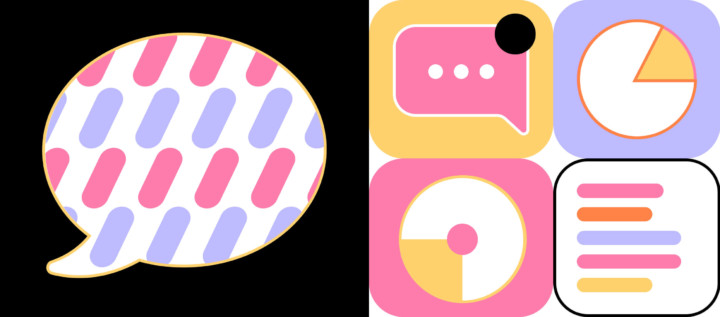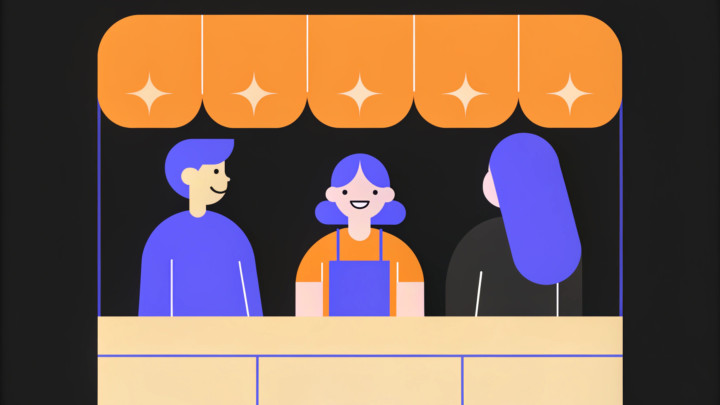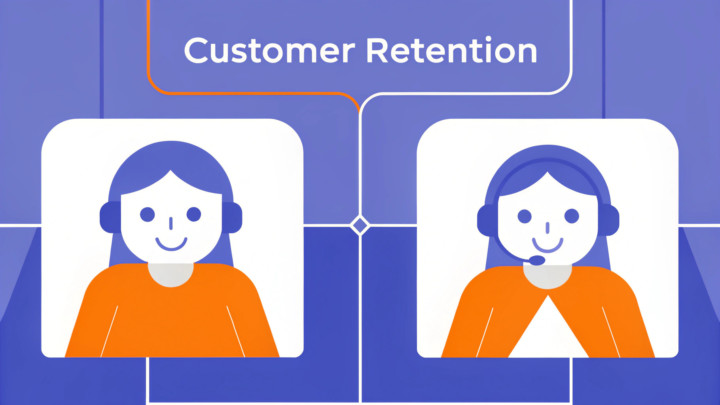How to Invite Respondents to Customer Interviews and Not Get Rejected | Dashly Experience
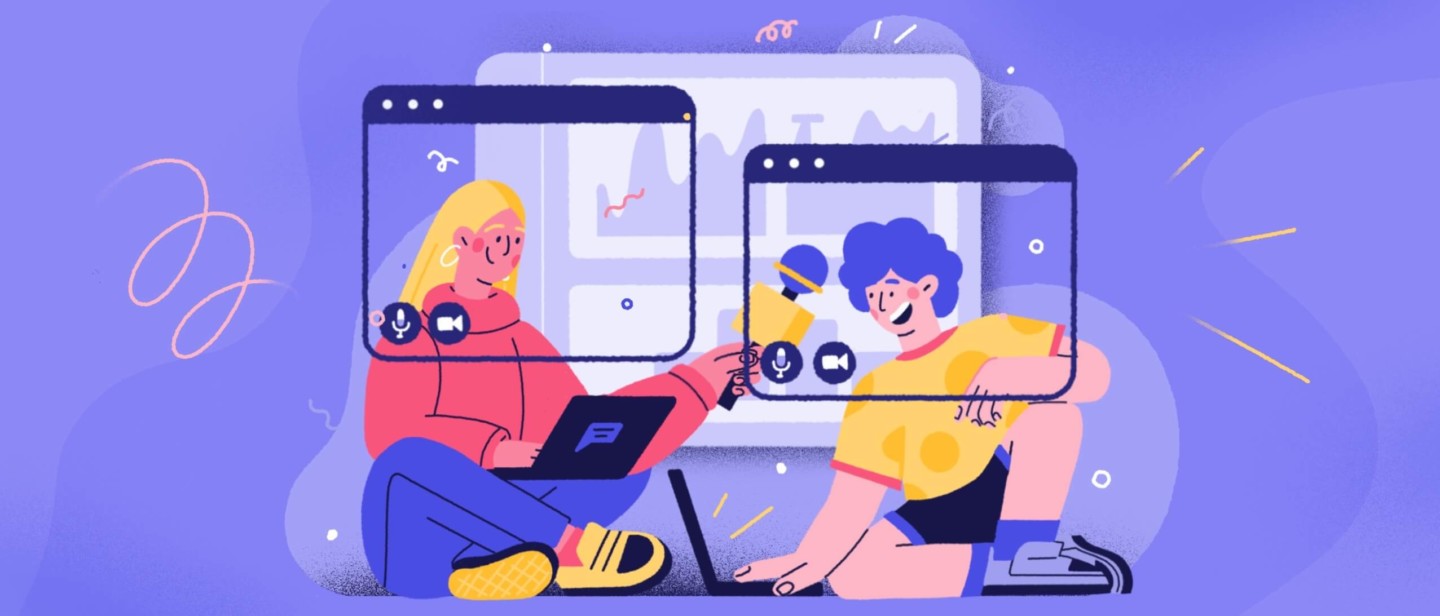
In Dashly, we often hold interviews: hallway testings, in-depth interviews, or some kind of user research. This definitely could be a separate science, because you need to learn so much to do it well. And we have a lot of things to share.
I already told you where to find respondents for an interview. Now it’s time to discuss how to invite them without being ignored.
Imagine: you know your target audience and where to find these people to chat with, but you still need to recruit them for the interview. How to make it happen? Many researchers face situations when the respondents just don’t reply to their follow-ups. As a result — not enough data to get the full picture of the problem you need to study. You spent time for nothing. Live with this.
Are there any ways to avoid such a failure? Yes, sure. My team and I are willing to share our tips on this topic based on the enormous amount of interviews we had. So, keep reading to get fruitful insights.
And watch the interview from Valerie and Roman!
Key points in writing message to respondents
Make clear what you want
First and foremost, you need to give a person all the information. People are more likely to read the message and reply in case they understand what you want to get from them. Here is a general formula:
Here is an example of the conversation with the potential respondent may look like:
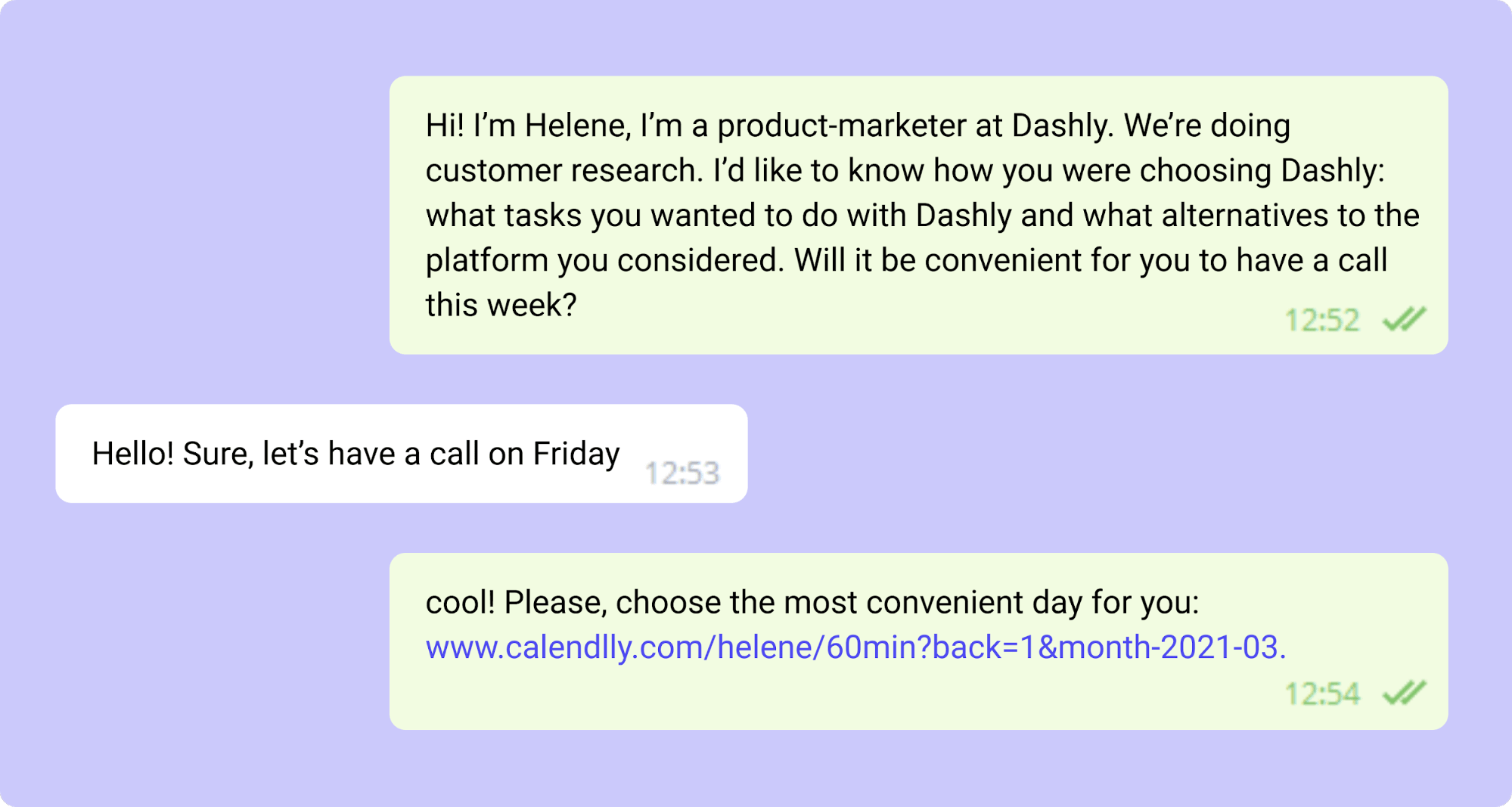
On one side, I want to send the complete information about the research, but on the other side, the respondent can refuse to read the big message and ignore me. This is why usually I ask whether the respondent is willing to talk with me, and only after this I tell them additional info and send a Calendly link.
Small things to note:
- Some people think that you are trying to sell them your product when you mention your company name. That’s why I usually don’t do that.
- Avoid writing with a single message (like just a ‘Hello’), and waiting for a reply for the next few minutes/hours/days. Nobody likes this, and the conversion rate to reply will definitely drop. I bet you already know this, and I won’t pay this much attention.
- Some respondents ask me to send the questions before the interview. In my experience, this always comes to nothing good. Respondents either start replying by text messages or ignore my messages, and we don’t get an interview in the end.
Read also: 17 Zendesk alternative services and 13 live chat alternatives to try this year
Give value for their time
Make sure that you give your respondents value for the time they spend on the interview — tell about this in the first message.

This will increase the probability that they will at least read your message and think about participation in your interview. You can use promo-codes, gift cards, ebooks, or money as a reward.
Recently, we held research on the customer journey. The goal was to involve users who read our emails but don’t buy the product. So, we decided to write an email where we invited people to interview and attach our book on CJM. And this worked — many people showed their desire to take part in our research.
Another case was when we conducted JTBD (jobs-to-be-done) research. That time, we needed to find marketers to ask about their work duties. We asked for help in different communities and promised to answer all their questions about JTBD after the interview. This topic was interesting for many people, so that we found the required number of respondents.
Read also: The secret weapon of your competitors or Why you should focus on customer service first
What tools we use to invite respondents
There are many options. We use Dashly Leadbot, LinkedIn, User Interviews, and Calendly (when we need to choose the time slot). All these platforms help to automate the process of inviting respondents to the interview.
Dashly leadbot
In case you need to find respondents from your website visitors, you can use Dashly Leadbot.
You can create a Leadbot campaign that will ask your website visitors all the qualification questions and send them a link to our lovely Calendly to choose the time.
All you need to do is to conduct the interview itself. Leadbot will do everything else for you.
Leadbot campaign can engage users in a conversation and qualify if the person fits your criteria so that you’ll get the list of users who are ready to participate in the interview.
Ok, then how to configure Leadbot?
This won’t take a lot of time. First, you need to go to the admin panel and choose the Leadbot section.
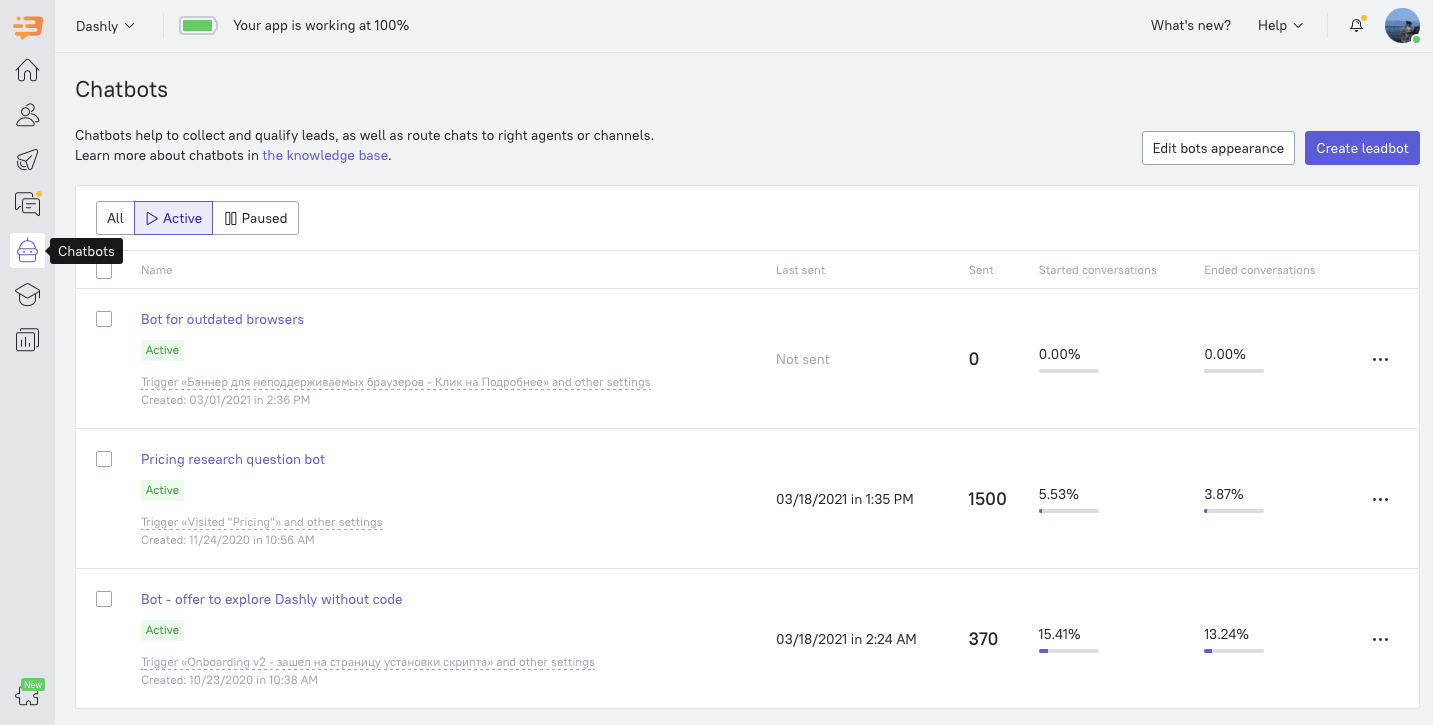
Then tap ‘Create a Leadbot’. Then you need to create bot branches, choose a trigger when the bot sends a message, its audience, and sending settings:
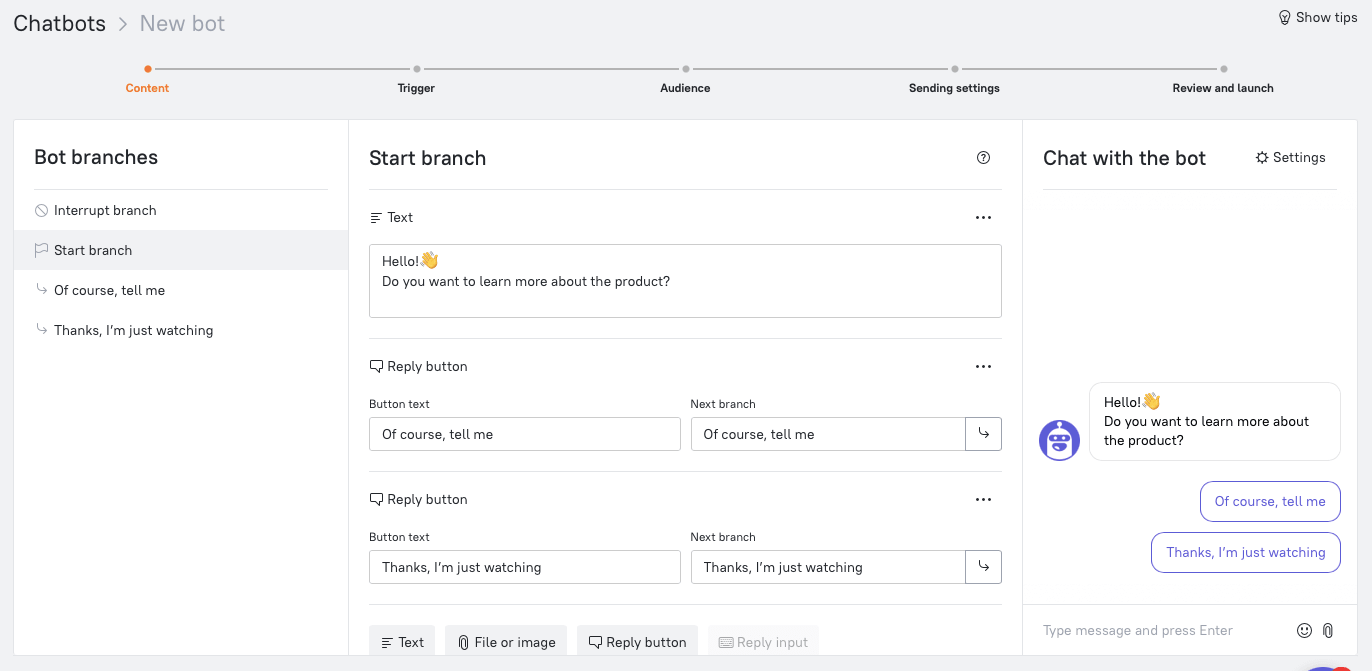
Ready. Now, wait for your users to be engaged?
Read also: The 36 statistics on how chatbot for businesses grow your revenue in 2023
User interviews
This is a platform where respondents and interviewers meet. To find respondents, you only need to describe your target audience, and the system will find them automatically. All that you left to do is to approve the participants and conduct the interview. More detailed instructions can find in this article.
Thanks! The list of customer interview questions is already in your inbox

The advantage of User Interviews is that all the people are willing to participate in your research by default — you only need to agree on price and time. And that the system automatically qualifies respondents for you, sure.
Read also: Top 15 Sales Funnel Builder Tools to Optimize Your Sales Strategy
This is a good option when you need to find people from different companies or a particular industry, as well as facilitating Linkedin connections. I love this social network, and here are some tips on optimizing your work with LinkedIn.
At the beginning of starting recruiting respondents in LinkedIn, I found the tool to automize outreach — LinkedIn Helper. I configured the sequence of auto messages, and all I need to do is choose the person I need to invite to the interview. The system sends follow-ups, and when a person replies, it stops automatically. This saves a lot of time for me, and I only need to choose the person I want to interview.
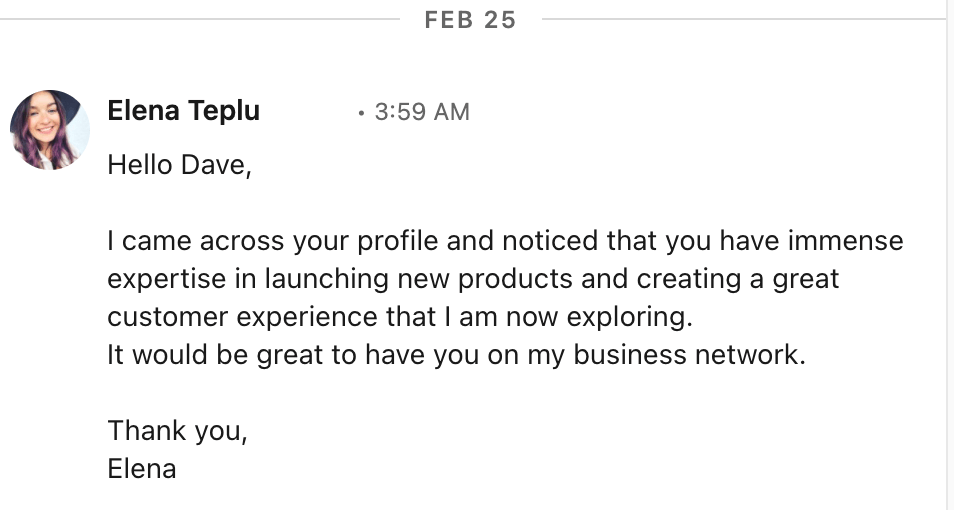
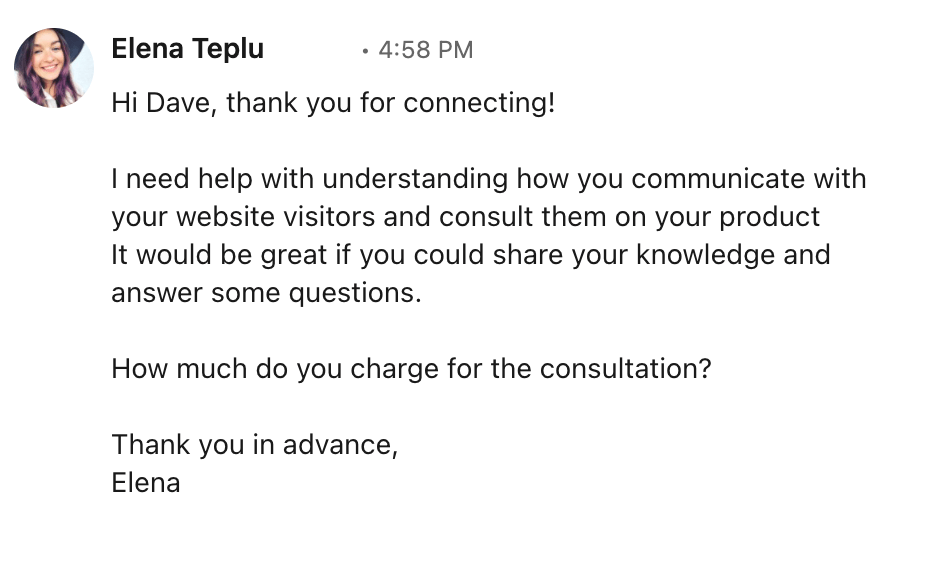
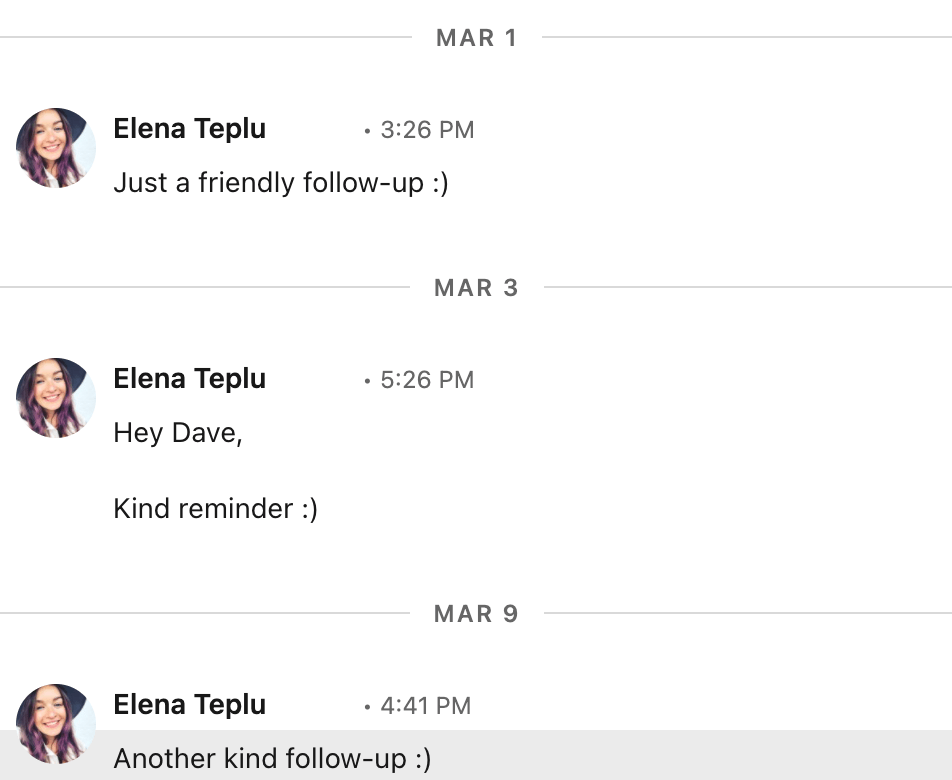
Read also: 10 conversion rate optimization tools to enhance your funnel and boost revenue
Calendly
When you’ve already found a person you want to talk to, you need to agree on the time. Sometimes this may look like this:
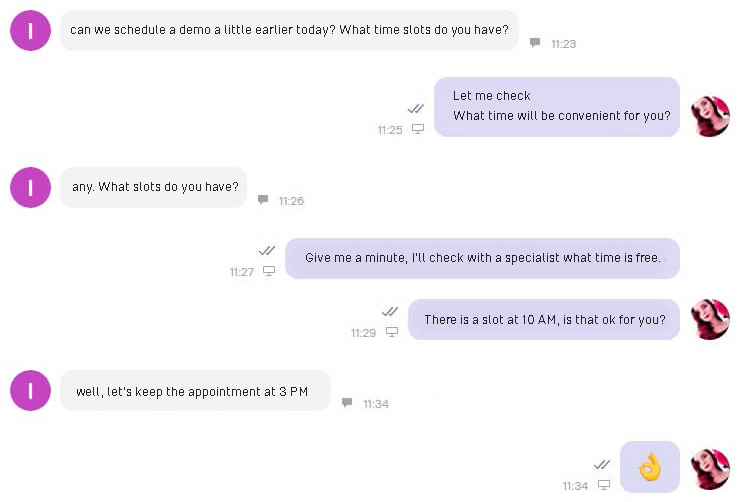
To avoid confusion with time zones and your schedule, you may just send the Calendly link, and a respondent will choose the time for themselves.
All the respondents forget about time zones. When scheduling an interview, you need to be careful about this.
So, to make an appointment, you first need to agree on the time zone, and after this, on the interview’s time as well. Seems like a lot of effort, huh? Calendly helps to avoid this by sending a link with your timetable with available slots — the respondent only needs to choose the most suitable one for them.
Here is an email that the respondent will receive after confirming the time slot:
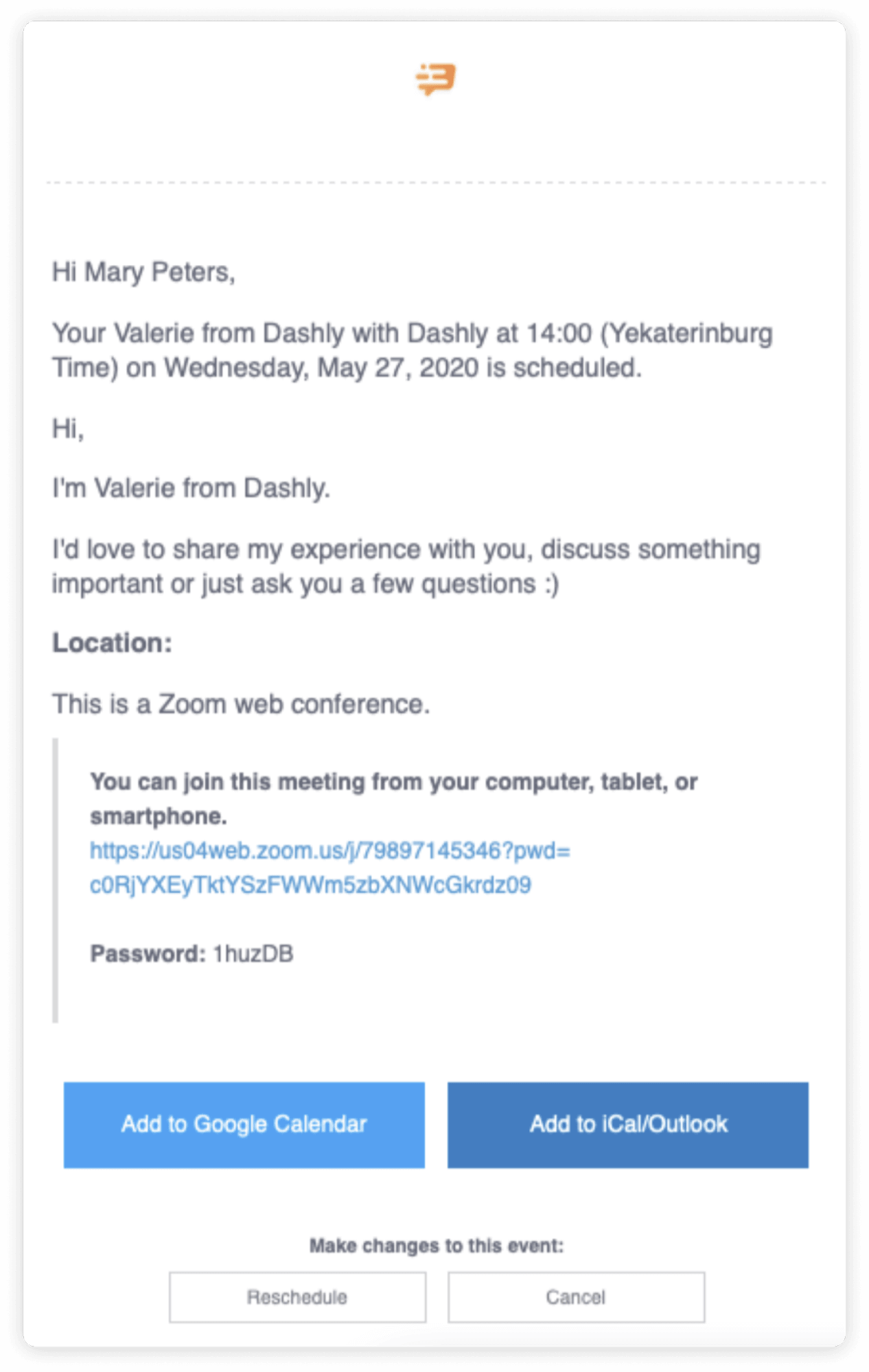
Read also: Customer engagement strategy template to create omnichannel campaigns
Follow-ups?
Yes, please. In some cases, I need to send several follow-ups and don’t be afraid of being annoying. Sometimes people don’t see your messages, so you need to send reminders about the meeting. Again, the LinkedIn helper can essentially save your time on this.
Usually, three or four follow-ups are enough, but sometimes I send up to 7 reminders. People may be too busy to read and reply to your message so that you shouldn’t be afraid to be obsessive.
My general advice: don’t be shy to remind about yourself. The fact that the person doesn’t reply to you doesn’t mean that you lost them as a respondent. They just may be busy.
Some more tips
- Try to increase the funnel from the top. So, in case you need to find five respondents, don’t write to five people and wait for their reply — find at least 20 people who meet your criteria. This way, you’ll increase the probability of finding the needed number of respondents.
- Delegate the search of respondents. This is a routine task and may take a lot of time to get the right people. So, try to find a person who can find respondents, write to them and agree on the interview time for you. This will essentially shorten the time spent on the research.
Usually, people are friendly to those who conduct research. In my practice and in the practice of my colleagues, there weren’t negative reactions. All the respondents were patient, and even if they were not available to participate in the research, they either didn’t reply or talk about this. So, don’t be afraid to write to people. Use our tips and find the respondents you need for your interview.
Read also:
👉 Live Chat Best Practices: 20 Hacks to Make Customer Service Better
👉7 Best Live Chat for eCommerce: Boost Conversion on your Website
👉 Top 5 live chat mobile app: find the best fit for your business
👉 Live Chat: How Online Chat Tool Can Help Your Business
👉 20 Best Live Chat Software for your website chat service





